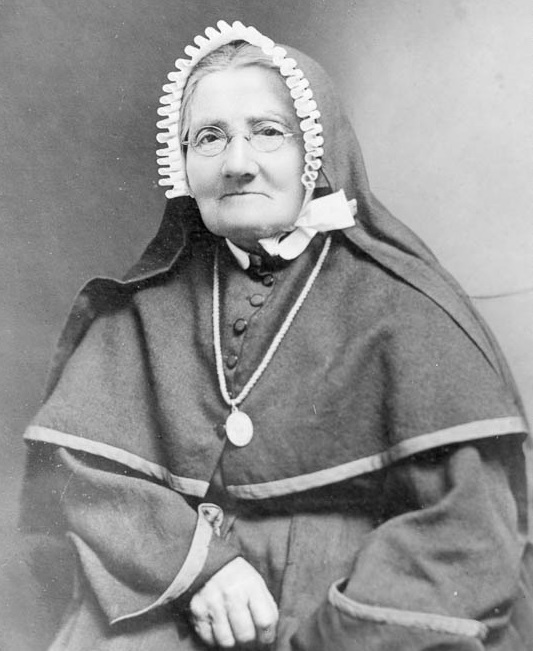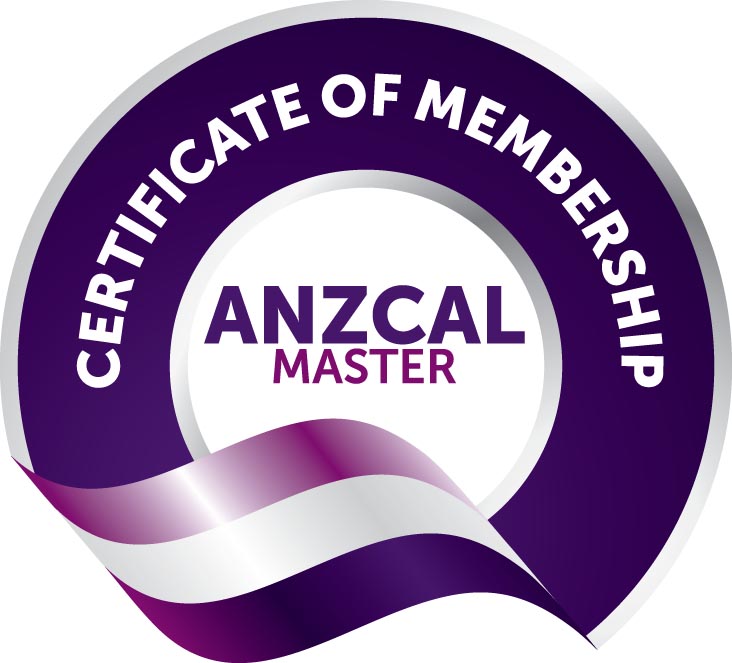Among the educators who significantly shaped early childhood education in New Zealand, one prominent figure shines. Her pioneering spirit left an indelible mark on the country and her life and works are an inspiration to those who find out more about this extraordinary woman.
A trailblazer in early childhood education, special education and Māori education, as well as a key contributor to the development of social sciences in New Zealand, Mother Aubert’s legacy is etched into the fabric of the nation.
This essay seeks to make known, the indomitable spirit of a remarkable woman, who commenced life in France as Suzanne Aubert and concluded it in New Zealand at the age of 91, as Mother Mary Joseph Meri Hōhepa Aubert.
Suzanne Aubert was better known to many by her religious name Mary Joseph or Meri Hōhepa or ‘Mother Aubert’. She first came to New Zealand in 1860 at the age of 25, arriving in Auckland from France, unable to speak English or Māori. Soon after her arrival she formed the Congregation of the Holy Family to educate Māori children, and overcoming linguistic barriers, she swiftly made her mark, exemplified by her significant contribution to the Māori language with the 1885 publication of the New and Complete Manual of Māori Conversation, later republished by Sir Apirana Ngata in 1901 as Complete Manual of Māori Conversation and Grammar (Rafter, 1972).
In 1885, she started a home for orphans and the under-privileged in Jerusalem, New Zealand on the Wanganui River. In 1892, she founded a religious order, the Daughters of Our Lady of Compassion (also known as The Sisters of Compassion) and later started two hospitals in Wellington. The first in 1900, St Joseph’s Home for the Incurables, and the second in 1907, Our Lady’s Home of Compassion.
Marie Henriette Suzanne Aubert was born on June 19,1835, to a wealthy Catholic family in St Symphorien-de-Lay, a small village not far from Lyons, France. Her early life was marked by adversity. A near-drowning incident at the age of two left her blinded and temporarily crippled. Despite wearing splints on her arms and legs until the age of five, and with eyesight only partially restored, she overcame these physical challenges with her mother’s unwavering and dedicated care. Her childhood, marked by physical challenges, fuelled her lifelong commitment to children with disabilities and her lifelong goal was to eliminate boundaries in the education and care of mentally and physically challenged children (Rafter, 1972).
Her formal educational journey began when she was 10 years old, at the Benedictine Abbey of La Rochette, an institution that provided education for girls and care for the aged, orphans, and ‘incurables’ — the latter a category in which Suzanne found herself placed. Later in life, and driven by her personal experiences, she was to establish a similar institution in Island Bay, Wellington (mentioned earlier i.e. Our Lady’s Home of Compassion).
Suzanne’s quest for knowledge was insatiable. After completing her formal education at 15, she immersed herself in diverse subjects: from receiving piano tuition from Liszt; to studying fine arts, literature and languages; to learning skills like needlework, cooking and household skills. She taught herself Spanish in order to read the writings of St Teresa of Avila in the original text.
Against her father’s wishes, her 18th birthday marked her formal entry into the convent, a decision influenced by her own mother’s devout Catholicism and charity work. Suzanne’s mother, Clarice, played a very special part in influencing what was to become Suzanne’s life’s work. Clarice dedicated a lot of her time to reforming and guiding prostitutes and unmarried mothers, by redirecting their lives and helping to restore their mana and self-respect. Suzanne was her mother’s principal assistant, and used her mother’s methods when she established the same work in Jerusalem, New Zealand in 1890 when she opened her first Foundling Home and Refuge for Adults (Rafter, 1972).
In contrast to her mother’s work, Suzanne’s primary area of focus was on the education and care of the children of these women, but she recognised that the well-being of the child depended largely, on the well-being of the parent.
She was influential in the establishment of a soup kitchen in Buckle Street in Wellington in 1901 after noticing unemployed men standing in queues in the cold waiting for opportunities of casual labour:
“Many men, now elderly and unable to work on farms or in the goldfields, were drifting back to the cities. They had no family support and were left impoverished. To meet the need, she opened a place where hot soup could be obtained morning and evening. No questions were asked. The men, at a given hour, would knock on the hatch, outside the kitchen, and it would be lifted, and they would be served a large pannikin (a metal drinking cup) of hot soup, usually with toast broken into it. From the very beginning, meals were provided twice a day, and this tradition continues 120 years later, where breakfast and dinner is served daily.” https://soupkitchen.org.nz/120-years/1901-1911/
Mother Aubert recognised critical societal issues and the ripple effect that these unemployed men had on families and wider communities. Particular areas of concern to her were:
- poverty,
- inequality for Māori,
- inequality for solo mothers,
- the lack of education and medical services in isolated areas,
- and the fact that there was no legislation in place for the protection and rights of children.
She was deeply concerned with poverty and the low social status of solo mothers – widowed or unmarried and without social security. The poor, the unmarried, the illegitimate, were the social outcasts of their time. Doomed to struggle financially for the rest of their lives, they often resorted to either prostitution, deserting their children, or to committing infanticide. She saw that the cycle of poverty and abuse was given momentum because mothers were unable to go in search of work to support their families because there was no-one to care for their children in their absence.
Mother Aubert’s enduring legacy includes the establishment of New Zealand’s first Daylight Home for Babies in 1902, pioneering the concept of a creche. Emphasizing education as a preparation for life, she advocated for teachers to closely observe and seriously listen to every child, principles echoed in modern teacher education programmes.
When she started her daylight home for babies under three, this “new idea” was for the nuns to ‘act as mothers’ during the day, taking care of the children’s needs, thus enabling the parents to earn a livelihood. It was such a success that the age limit was soon raised from three years to five years, and set the precedent for future early childhood education and care in New Zealand.
The spirit of Mother Mary Joseph Meri Hōhepa Aubert was remarkable, and we can be thankful today, for the foundations she laid; not only in early childhood education, special education and Māori education; but in communities and society as a whole. Her faith and love of God and humanity was absolutely complete. She believed that God presented Himself in every living person that crossed her path, and that she must love and serve that person as she would God.
Her heart was open to people of all races, all denominations and all circumstances. She was humorous, feisty and most unlike a nun in her many dealings with people from all walks of life, including the New Zealand Government’s Minister of Education and the Minister of Hospitals. She ensured that changes were made at the highest levels, in order to secure positive outcomes for the people she served – the people of New Zealand.
A noteworthy addition to Suzanne Aubert’s legacy is her pending sainthood. In 2017, she was declared ‘venerable’ by the Catholic Church, signifying a major step towards sainthood and her canonisation cause.
When Suzanne Aubert passed away on October 1, 1926, at the age of 91, her journey to sainthood was officially underway. Her goodness and holiness were already being acclaimed by many. People from all walks of life recognized her contributions, and the Sisters of Compassion, encouraged by Roman officials, began collecting relevant information about her life and virtues. Her pending beatification process, a step towards canonization, signifies the acknowledgment of her virtuous life and contributions to society. Today, she stands as a testament to faith, love, and service—a remarkable figure in New Zealand’s history, whose pioneering spirit continues to inspire.
To discover more about this amazing woman, go to : https://suzanneaubert.co.nz/
© Gaynor Clarke, December 2023
Gaynor Clarke
B.Ed (Teaching), Cert Tertiary Teaching, PGDip Ed, MEd Leadership
Reach. Teach. Lead.
Reach Education Ltd
Teacher Leadership Mentoring and Life Coaching. Personal and Professional Development.
Gaynor is a teacher educator and mentor facilitating personal & professional leadership wellbeing outcomes for teachers.
If you are an early childhood teacher or leader looking to enhance your leadership skills, I would love to work with you. As a leadership mentor and coach, I specialize in helping early childhood educators develop their leadership potential and make a positive impact for the ākonga they serve. If you are interested in learning more about my leadership mentoring services, please visit my website or contact me directly to schedule a consultation. I would love to work with you!
Reference:
Rafter, P. M (1972). Never let go! The remarkable story of Mother Aubert. 182 Wakefield Street, Wellington, New Zealand, A.H. & A.W. Reed Ltd.








Leave a Comment
You must be logged in to post a comment.